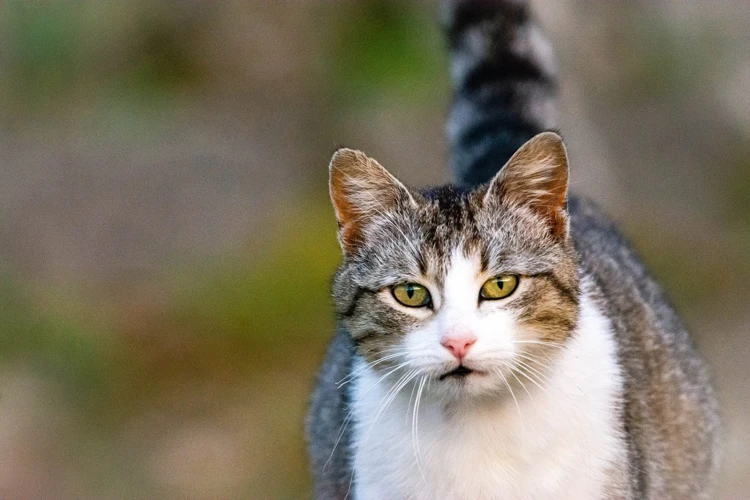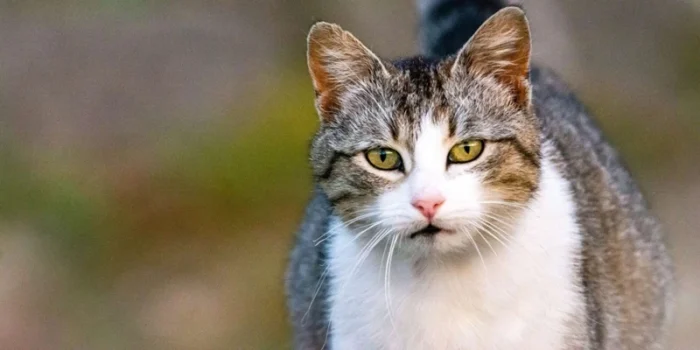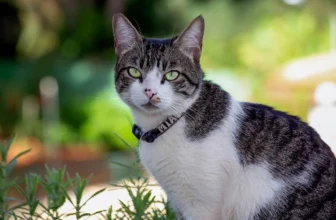Alarming whimpers and restless behavior are common signs that your wirehair is about to give birth. If you’re a new mother or even a seasoned one, it’s natural to feel overwhelmed by the thought of such a significant event in your cat’s life. However, with proper preparation, you can make the experience less stressful. This guide will delve deep into everything you need to know about managing your wirehair’s labor and delivery, including common problems that can occur during labor, how to comfort your cat during the process, and what to do in emergency situations. So, buckle up, and let’s get started on this exciting yet nerve-wracking journey together.
Understanding Labor and Delivery in Wirehairs

The process of labor and delivery can be daunting for any cat owner, especially for those who have wirehair cats. As wirehairs have unique characteristics and needs, it’s important to understand what to expect during the stages of labor and delivery. This will help you prepare better and provide the necessary care and support your furry friend needs. In this section, we will explore the signs and stages of labor in wirehairs, as well as the delivery process. By gaining a better understanding of these aspects, you can help ensure a safe and successful birthing experience. To learn more about the stages of pregnancy in wirehairs, check out our Wirehair Pregnancy Stages Guide for Cats or our helpful tips on feeding pregnant wirehairs.
Signs of Labor
As a responsible pet owner, it is important to know the signs of labor in your wirehair cat to ensure a smooth and healthy delivery. Here are some common signs to watch out for:
- Decreased Activity: Your wirehair might become less active and rest more as the delivery approaches.
- Nesting Behavior: Your cat might begin to look for a secluded and comfortable place to give birth, such as a closet or a cardboard box.
- Inappetence: Your cat may lose interest in food or stop eating as much in the days leading up to delivery.
- Increased Vocalization: Cats may meow more frequently or more loudly during labor.
- Temperature Drop: A wirehair’s body temperature may drop a few degrees 12 to 24 hours before giving birth.
It is important to keep in mind that every wirehair is different and may show different signs of labor. If you have any concerns or if your cat’s behavior changes suddenly, it is always best to contact your vet. Don’t forget to read our article about wirehair pregnancy health issues to better prepare for the delivery.
Stages of Labor
During labor, your Wirehair cat will go through three stages. Each stage is characterized by different behavioral and physiological changes. Knowing these stages can help you understand what your cat is going through and prepare you to take appropriate action.
Stage 1: This is the early stage of labor and can last between 6 to 12 hours. During this stage, your Wirehair will start showing signs of restlessness, nervousness and discomfort. She may stop eating and try to find a quiet place to be alone. The most common physical signs of stage 1 labor are panting, pacing, and possibly vomiting.
Stage 2: This is the actual delivery stage that can last from 30 minutes up to 12 hours. During this stage, your cat’s cervix will fully dilate, and she will start pushing and contracting. You will be able to see the first kitten’s head emerging from the birth canal. Once the head is out, the rest of the kitten will follow. Your cat will likely take few breaks between deliveries, and she may meow and purr to comfort the kittens. During this stage, you should avoid interfering with the process unless you notice an issue.
Stage 3: This is the final stage, and it can last up to 24 hours. During this stage, the placenta will detach from the uterus and will be delivered. Each kitten should have its placenta delivered, but sometimes two kittens may share a placenta. You should be careful to count the placentas during the delivery to ensure that they are all delivered successfully.
It’s important to note that the length of each stage varies. It’s also possible for your cat to take a break between stages, and that’s perfectly normal. Always be patient and support your Wirehair as much as possible.
Now that you know about the stages of labor, the next step is to prepare for the delivery. Read on to learn how to do that.
To learn more about postpartum care for your Wirehair cat and her kittens, check out our article on postpartum care for Wirehairs and their kittens. If you’re planning to breed Wirehairs, it’s essential to do so responsibly. Check out our article on breeding Wirehairs responsibly. And if you’re expecting Wirehair kittens soon, be sure to consult our Wirehair kitten checklist to make sure you have everything you need.
Delivery
Delivery is the final stage of labor when the kittens are born. It is essential to be prepared for this stage so you can assist your Wirehair as needed. Here are the steps to take during delivery:
| Step | Description |
|---|---|
| Step 1: | Make sure your Wirehair is in a clean, warm, and quiet area. She will likely seek privacy and may try to crawl into a secluded spot. |
| Step 2: | Watch out for the signs of labor, such as restlessness, panting, and vocalization. When your Wirehair starts having contractions, the first kitten should arrive within an hour. |
| Step 3: | Allow your Wirehair to take the lead in delivering her kittens. She may knead, scratch, and vocalize during the process. You can gently stroke and provide encouraging words to help her feel comforted. |
| Step 4: | When the kitten’s head appears, make sure the sac around it is removed to prevent the kitten from suffocating. Gently wipe the kitten’s nose and mouth with a towel if the mother does not lick it clean. |
| Step 5: | Once the kitten is fully delivered, assist with the umbilical cord by using scissors to cut it 1-2 inches from the kitten’s body, then tie it with a clean string. |
| Step 6: | Count the placentas to ensure all kittens have been delivered. The mother may eat them, but it is better to remove them to prevent infection. |
| Step 7: | Allow your Wirehair to rest between deliveries. The time between kittens can range from 5-30 minutes. |
| Step 8: | Continue to monitor your Wirehair and newborn kittens for any signs of distress or abnormalities. |
Remember to always wash your hands before and after assisting with the delivery, and call your veterinarian if you have any concerns or complications arise. Delivery is an intense and miraculous process, but with preparation and care, you can help your Wirehair bring new life into the world.
Steps to Help Your Wirehair through Labor and Delivery

As your wirehair approaches labor and delivery, it is essential to provide her with the necessary support to ensure a safe and successful delivery. This can be a stressful time for both you and your pet, but with proper preparation and understanding, you can help your wirehair through the process with ease. In this section, we will provide step-by-step guidance on how to assist your wirehair during labor and delivery. From preparing for labor to assisting with delivery, and caring for your pet post-partum, these tips will help you confidently guide your wirehair through this exciting journey. So let’s dive in!
Preparation
Preparing for labor and delivery is essential for ensuring a safe and smooth delivery for your wirehair. Here are the steps you can take to prepare:
| Step | Description |
|---|---|
| 1 | Choose a birthing location: Decide on the location where your wirehair will give birth. This can be at home or at a veterinary clinic. Make sure the location is clean and comfortable for your cat. |
| 2 | Gather supplies: Gather essential supplies such as clean towels, scissors, a thermometer, and dental floss. These will come in handy during the delivery process. |
| 3 | Prepare a nesting area: Create a nesting area for your wirehair to rest comfortably before and after delivery. Make sure it is a quiet and stress-free area. |
| 4 | Consult with a veterinarian: It is always a good idea to consult with a veterinarian before the due date. They can provide advice on what to expect during the delivery process and what to do if complications arise. |
| 5 | Monitor your cat’s health: Keep an eye on your wirehair’s health during the last few weeks of pregnancy. Look for signs of distress or illness and consult with a veterinarian immediately if any concerns arise. |
By taking the initiative to prepare for your wirehair’s labor and delivery, you can help ensure a smooth and safe delivery for both your cat and her kittens. Remember to always consult with a veterinarian if you have any concerns or questions throughout the process.
Comforting Your Cat
Comforting your wirehair during labor and delivery is crucial to the health of both the mother and her kittens. Providing a comfortable and safe environment can help your cat feel more relaxed and allow her to focus on giving birth. Here are some tips for comforting your cat during the labor process:
| Tip | Description |
|---|---|
| Provide a quiet and dark room | Minimize noise and light to create a calming environment. A dark room will help your cat feel more secure. |
| Offer a comfortable place to rest | Provide a comfortable bed with soft blankets for your cat to rest. A heated bed or warm towel can also help relax your cat. |
| Keep her company | Stay with your cat to provide her with emotional support. Talking to her in a calm and soothing voice can also be helpful. |
| Assist with grooming | Gently grooming your wirehair can help her relax and reduce her stress level. Use a soft brush to stroke her fur. |
| Offer food and water | Provide your cat with food and water to keep her energy level up. However, don’t force her to eat or drink if she doesn’t want to. |
It’s important to note that not all cats will want to be comforted in the same way. Experiment with different methods to find what works best for your cat. Above all, be patient and supportive of your wirehair during this challenging but ultimately rewarding time.
Assisting with Delivery
Assisting your wirehair during delivery can be an overwhelming experience, but with the right preparation and knowledge, you can help make the process smoother for both your cat and yourself. Here are some steps you can take to assist with the delivery:
- Be Ready: As mentioned earlier, the gestation period for cats is around 60-65 days, so be ready with all the necessary supplies at least a week or two in advance. Keep a kit of supplies containing clean towels, disposable gloves, scissors, sterile thread, clean hemostats or clamps, and lubricating jelly.
- Provide a Safe and Comfortable Space: Your wirehair should not be disturbed during labor. Create a quiet and dark place for her to give birth, like a cardboard box or a bed lined with soft blankets. Keep the place warm and draft-free. Provide a litter box nearby, food, and water, as she may feel thirsty during labor and between contractions.
- Monitor the Contractions: You need to keep an eye on how frequently and how long the contractions last. Use a stopwatch to time them and make a note of their duration. Count the number of times they occur, as this can help your vet recognize if a problem occurs.
- Observe the Delivery Process: Another critical part of assisting your wirehair through delivery is observing the whole process. Keep a watchful eye on the kitten’s presentation and ensure that the placenta is pushed out after each kitten. Some wirehairs may require your help in cleaning the kittens to clear their air passages, and this can be done with a clean towel.
- Know When to Seek Help: While most wirehairs can safely give birth without assistance, there can be complications. If the labor lasts for more than 24 hours, if there is excessive bleeding or discharge, or if the mother seems to have difficulty in delivering the kitten or appears in distress, contact your vet immediately.
These steps can help make the delivery process easier for both your wirehair and yourself. However, always remember to stay calm and focused, as your cat can sense your stress levels. Providing support and reassurance can help ease the process and ensure a successful delivery.
After the Delivery
Once your Wirehair has given birth to her litter, there are a few things you should do to ensure her and her babies’ health. Here are the steps to follow after the delivery:
- Give the Mother Space: After delivery, your Wirehair will need some privacy. Place her and her newborn babies in a calm, warm, and quiet area where she will feel secure and comfortable. Avoid sudden movements, loud noises, and any activities that could disturb her.
- Observe the Puppies: Check the newborn puppies to ensure they are healthy. Monitor their breathing, body temperature, and weight. If you notice any signs of distress or poor health, contact a veterinarian immediately.
- Ensure the Mother is Fed and Hydrated: Your Wirehair will be tired after delivery and will need plenty of rest, water, and food. Offer her high-quality, protein-rich food and fresh water to keep her hydrated and nourished. Avoid giving her any medication without consulting a veterinarian.
- Keep the Area Clean: To prevent infections, keep the area clean and dry. Change the bedding regularly and maintain good hygiene in the area where the mother and the puppies are staying. You can use warm water and a mild soap to clean the puppies gently if needed.
- Maintain Regular Vet Check-ups: Schedule regular vet check-ups for your Wirehair and her puppies to ensure their health and well-being. This is especially important in the first few weeks after birth when they are vulnerable to infections and diseases.
Taking care of a mother Wirehair and her newborn puppies can be challenging, but it is a rewarding experience. With proper care and attention, you can help your Wirehair and her puppies thrive and develop into healthy, happy pets.
Things to Watch Out For
As much as labor and delivery can be an exciting and joyful time, it’s important to remain vigilant for any potential complications that may arise. While wirehair births are usually uneventful, it’s crucial to watch out for any signs of distress or problems during the process. In this section, we’ll cover some red flags to keep an eye out for and what to do if you encounter them. It’s always better to be prepared, so let’s dive in and learn what to watch out for during your wirehair’s labor and delivery.
Common Problems during Labor
During labor, your wirehair may experience some common problems that require attention. Here is a table summarizing the common problems and their potential causes:
| Problem | Potential Causes |
|---|---|
| Failure to progress | Weak contractions, exhaustion, pelvic abnormalities |
| Dystocia | Abnormally positioned kittens, large kittens, small birth canal |
| Fetal stress | Prolonged labor, weak contractions, maternal health issues |
| Uterine Inertia | Infection, hormonal imbalances, age |
| Retained Placenta | Incomplete contractions, weak uterine tone, toxicity |
Failure to progress is a very common problem during labor in wirehairs. This occurs when the cat’s contractions are not strong enough to push the kittens through the birth canal. This problem can also be caused by pelvic abnormalities or exhaustion in the cat.
Another common problem is dystocia. This occurs when the kittens are abnormally positioned or are too large for the birth canal. In some cases, the birth canal may also be too small for the kittens to pass through.
Fetal stress can occur when the labor has been prolonged or the cat has weak contractions. This can lead to a distressed kitten in the womb, and it’s important to address this situation promptly. Other maternal health issues can also cause fetal stress.
Uterine inertia is another common problem that can occur when the cat’s uterus is not contracting properly. This can happen due to hormonal imbalances, infection, or age.
Finally, retained placenta can occur when the cat’s contractions are not strong enough to push out the placenta after the birth of the kittens. This can occur due to incomplete contractions or weak uterine tone. Toxicity can also be a contributory factor.
If you suspect any of these problems during your wirehair’s labor, it’s important to seek the help of a veterinarian as soon as possible. These problems can quickly turn into emergency situations, and you don’t want to risk the health of your cat or her kittens.
Emergency Situations
While it’s important to stay optimistic and be prepared for the labor and delivery process, things can sometimes take a dangerous turn. It’s essential to know what to do in an emergency situation. Below is a list of potential emergencies and how to handle them:
- Difficulty Breathing: If your wirehair is struggling to breathe, turn off any fans or air conditioning units and move them to a quiet, warm room. Call your vet immediately.
- Excessive Bleeding: If your wirehair is bleeding excessively and it won’t stop, wrap a clean cloth around the affected area and apply pressure. Contact your vet right away.
- Retained Kitten: If your cat has been pushing for an extended period without delivering a kitten, contact your vet immediately. A retained kitten can be a life-threatening situation for both the mother and the kitten.
- Seizures: If your wirehair has a seizure or loses consciousness, wrap them in a warm, soft blanket and call your vet as soon as possible.
- Excessive Vomiting and Diarrhea: If your cat is experiencing severe vomiting or diarrhea, it’s crucial to contact your vet right away. These symptoms can lead to dehydration, which can be life-threatening.
In any emergency situation during labor and delivery, it’s essential to stay calm and act quickly. Remember that your wirehair is depending on you to keep them safe and healthy. Always have your vet’s contact information handy and be prepared to act when necessary.
Conclusion
After going through the entire process of managing your wirehair’s labor and delivery, it’s important to remember that every cat is unique. What worked for one cat may not work for another, so it’s important to trust your instincts. Being attentive to your cat’s behavior and knowing what to look out for can help to ensure a safe delivery.
Remember to always provide your wirehair with a calm, peaceful environment and be patient throughout the process. It’s also important to seek the assistance of a veterinarian if you notice any abnormal behavior or complications during labor and delivery.
By following the steps mentioned in this article and staying aware of potential problems, you can help keep your wirehair safe and healthy during this exciting time. Your patience, care, and attention are much appreciated by your feline friend!
Frequently Asked Questions
What is the gestation period for Wirehaired Pointing Griffons?
The gestation period for Wirehaired Pointing Griffons is approximately 63 days.
What are some signs that my Wirehair is ready to give birth?
Signs that your Wirehair is ready to give birth include restlessness, nesting behavior, and a drop in body temperature.
How long does each stage of labor typically last?
The first stage of labor usually lasts 12-24 hours, the second stage lasts 2-6 hours, and the third stage lasts up to an hour.
Should I be present during the delivery?
It’s recommended that you are present during the delivery to provide assistance and support to your Wirehair.
What supplies should I have on hand for the delivery?
You should have clean towels, scissors, sterile lubricant, a bulb syringe, and a heating pad on hand for the delivery.
How can I help my Wirehair during the delivery?
You can help your Wirehair during the delivery by providing comfort and support, assisting with the delivery, and following any instructions from your veterinarian.
What should I do if my Wirehair has difficulty delivering a puppy?
If your Wirehair has difficulty delivering a puppy, it’s important to contact your veterinarian immediately for assistance.
What are some common postpartum problems to watch out for?
Common postpartum problems to watch out for include retained placentas, uterine infections, and postpartum bleeding.
When should I schedule a follow-up appointment for my Wirehair with the veterinarian?
You should schedule a follow-up appointment for your Wirehair with the veterinarian approximately 24-48 hours after the delivery to ensure that everything is progressing well.
Can I breed my Wirehair on my own, or should I seek a professional breeder?
It’s recommended that you seek a professional breeder to ensure that your Wirehair’s breeding is properly planned and executed for the health and safety of both the mother and puppies.







